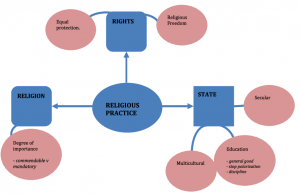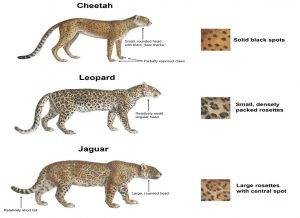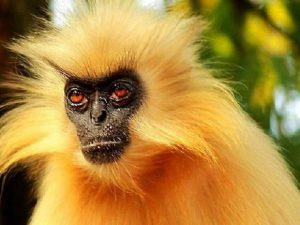THE INDIAN POLITY AND GOVERNANCE
1. THE FREEDOM OF RELIGION AND ATTIRE
THE CONTEXT: The controversy surrounding the wearing of ‘hijab’ in a college in Karnataka’s Udupi district has spread to more colleges in the state, causing concerns within the Education department as well as parents and students.
THE EXPLANATION:
The amid Karnataka school’s denial of entry to six girls in hijab throws the spotlight on freedom of religion. The issue throws up legal questions on reading the freedom of religion and whether the right to wear a hijab is constitutionally protected.
How is religious freedom protected under the Constitution?
- Article 25(1) of the Constitution guarantees the “freedom of conscience and the right freely to profess, practice and propagate religion”. It is a right that guarantees a negative liberty — which means that the state shall ensure that there is no interference or obstacle to exercise this freedom.
- However, like all fundamental rights, the state can restrict the right for grounds of public order, decency, morality, health and other state interests.
- Over the years, the Supreme Court has evolved a practical test of sorts to determine what religious practices can be constitutionally protected and what can be ignored.
- In 1954, the Supreme Court held in the Shirur Mutt case that the term ‘religion’ will cover all rituals and practices ‘integral’ to a religion. The test to determine what is integral is termed the ‘essential religious practices’ test.
What is Essential Practice of Religion?
- It was held that a practice is considered essential to a religion if it is essential to the community following the religion. Furthermore, Article 25(1) and 26(b) offers protection to religious practices. Affairs which are purely secular may be regulated by statute without infringing the aforesaid articles.
- In order that the practices in question should be treated as a part of religion they must be regarded by the said religion as its essential and integral part; otherwise even purely secular practices which are not an essential or an integral part of religion are apt to be clothed with a religious form and may make a claim for being treated as religious practices within the meaning of Article 26.

2. THE STATUS OF CRIMINAL PROCEEDINGS AGAINST LEGISLATORS
THE CONTEXT: According to the Supreme Court, a total of 4,984 criminal cases against former and sitting Members of Parliament (MPs) and Members of Legislative Assembly (MLAs) are awaiting trial before various sessions and magistrate courts across the country.
THE EXPLANATION:
This marks an increase of 862 such cases in the last three years – up from 4,122 in December 2018 to 4,984 in December 2021.
According to the report, “Even after disposal of 2,775 cases after 04.12.2018, the cases against MPs/MLAs have increased from 4,122 to 4,984. This shows that more and more persons with criminal antecedents are occupying the seats in the Parliament and the State Legislative Assemblies,” adding that “it is of utmost necessity that urgent and stringent steps are taken for expeditious disposal of pending criminal cases”.
Reasons for delayed trial:
- Stays granted by various high courts,
- Insufficient special courts to exclusively try cases against MPs/MLAs,
- Shortage of prosecutors and latches in prosecution,
- Delayed investigation.
CRIMINALIZATION OF POLITICS
The criminalization of politics means the participation of criminals in politics. Means that persons with criminal background contest in the election and get selected as a member of parliament or state legislature. It is said that the politics had reached a stage where the lawmakers became the lawbreakers. In a democratic country like India, the increasing nexus between criminals and politics threatens the survival of true democracy.
The increasing percentage of members of parliament who have a criminal background:
- 2004- 24%
- 2009-30%
- 2014-34%
- 2019-43%
The law commission in its 179th report recommended an amendment to the Representation of people act 1951. It suggested the people with criminal backgrounds should be disqualified for five years or until acquittal. It also recommended that the person who wants to contest the election must furnish details regarding any pending case, with the copy of the FIR/complaint, and also furnish details of all assets. But no action was taken on the recommendation by the government due to a lack of consensus amongst the political parties.
Suggested measures:
- There should be an amendment in the RP act to debar those persons from contesting elections against whom any serious Nature of crimes is pending.
- A kind of awareness program should be started for voters to make them aware of their right to know the criminal background of the person to whom they are going to cast their votes.
- The election commission should be given more rights to prevent the criminalization of politics. A penalty should be inflicted on those political parties who give tickets to those persons who have a criminal background.
THE ENVIRONMENT AND ECOLOGY
3. ASSAM’S FIRST LEOPARD CENSUS
THE CONTEXT: A forest division in Assam has initiated the State’s first leopard census to map the habitat and routes of the spotted cat and establish standards to be followed for urban planning.
THE EXPLANATION:
- According to the forest officials, mapping the leopard’s territories was necessary in view of the increasing man-animal conflicts due to rapid infrastructure development. The division covers urban, semi-urban and rural areas on the northern bank of the Brahmaputra river facing Guwahati, once a leopard domain.
- “Leopards have been the most neglected of the greater cats in Assam. The census will help understand their habitat and occupancy area leading to better management in an area which is a mosaic of suburban, rural and forest areas.
- Leopards prefer the fringe areas of jungles and often raid human settlements for food. The objective of this exercise was to map their population, habitat and movement routes for better planning of human settlements.
- In 2014, a national census of leopards around tiger habitats was carried out in India except the northeast. 7,910 individuals were estimated in surveyed areas and a national total of 12,000-14,000 speculated
About Leopard:
- Scientific Name- Panthera pardus.
- The Indian leopard is a leopard subspecies widely distributed on the Indian subcontinent.
- Nine subspecies of the leopard have been recognized, and they are distributed across Africa and Asia.
Habitat & Protection: In India, the leopard is found in all forest types, from tropical rain forests to temperate deciduous and alpine coniferous forests. It is also found in dry scrubs and grasslands, the only exception being desert and the mangroves of Sundarbans.
Threats: Hunting & Poaching, Human-Leopard Conflict.
Protection Status:
- Listed in Schedule I of the Indian Wildlife (Protection) Act, 1972.
- Included in Appendix I of CITES.
- Listed as vulnerable on the IUCN Red List.

4. ASSAM VILLAGERS OPPOSE SANCTUARY TAG FOR GOLDEN LANGUR HABITAT
THE CONTEXT: Villagers staying adjacent to Kakoijana reserve forest in Assam’s Bongaigaon district have opposed the state government’s decision to earmark the area as a wildlife sanctuary as they believe it will take away their rights.
THE EXPLANATION:
- The forest is home to the golden langur (Trachypithecus geei), characterised by its striking golden orange pelage and found only in Assam and Bhutan,which is listed in the “world’s 25 most-endangered primates”.
- The Assam forest department had recently issued a preliminary notification for 19.85 sq km Kakoijana Bamuni Hill Wildlife Sanctuary under Aie Valley Division.
- A total of 34 villages with a population of around 2,000 households stay adjacent to the reserve forest. The people are mostly from Koch Rajbongshi, Boro, Garo, Rabha and Gorkha communities.
- According to the villagers the imposition of rigid laws under Wildlife Protection Act, 1972 by upgrading the Kakoijana reserve forest as a wildlife sanctuary would tinker with the customary and traditional practices, and consequently result in them losing the community ownership over the forest.
- The villagers pointed out that the conservation efforts of the locals had helped the authorities concerned to restore the forest canopy from less than 5% to more than 70%, and the golden langur population from less than 100 to more than 600 over almost three decades.
ABOUT GOLDEN LANGUR

- The golden langur (Trachypithecus geei), characterised by its striking golden orange pelage and found only in Assam and Bhutan, is found in the forest reserve area.
- Golden langur is an endangered primate, endemic to the semi-evergreen and mixed-deciduous forests along India-Bhutan border.
- It was found in 1953 by naturalist E.P. Gee. Kakoijana is one of the prime habitats of the golden langur. It has already been listed as an endangered species in the IUCN Red List and is in the Schedule-I species of the Wildlife Protection Act (1972) and it was Listed in Appendix I of CITES.
THE PRELIMS PRACTICE QUESTIONS
QUESTION OF THE DAY 5th FEBRUARY 2022
Q. Consider the following statements about Golden langur:
- It is endemic to India.
- It is found only in state of Assam in India.
- It is an endangered species.
Which of the above given statements is/are correct?
a) 1 and 2 only
b) 2 and 3 only
c) 3 only
d) 1, 2 and 3
ANSWER FOR 4th FEB 2022
Answer: c)
Explanation:
Statement 1 is incorrect: The State of Forest Report was published by every two years.
Statement 2 is incorrect: According to the report, Northeastern states shows decreased in the forest cover.
Spread the Word
